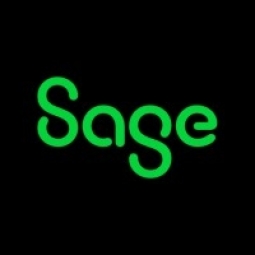Customer Company Size
Large Corporate
Region
- America
Country
- United States
Product
- Sage ERP X3
Tech Stack
- ERP
Implementation Scale
- Enterprise-wide Deployment
Impact Metrics
- Productivity Improvements
- Cost Savings
Technology Category
- Functional Applications - Enterprise Resource Planning Systems (ERP)
Applicable Functions
- Logistics & Transportation
- Sales & Marketing
Use Cases
- Supply Chain Visibility
- Inventory Management
Services
- System Integration
- Training
About The Customer
Russell Sigler, Inc. is a leading wholesaler of heating and air-conditioning products. The company is headquartered in Phoenix, Arizona and operates from 35 branch locations throughout the Southwest and California. Russell Sigler, Inc. distributes the Carrier and Bryant product lines, providing contractors with all the necessary equipment, parts, and supplies for installing and maintaining quality commercial and residential air conditioning and heating systems. The company has been growing its operations and increasing its presence in the market.
The Challenge
Russell Sigler, Inc., a leading wholesaler of heating and air-conditioning products, was facing the challenge of managing its growing operations and increasing market presence. The company was undergoing a major expansion, more than doubling its revenues and employee count, and adding 25 additional locations. The company required a robust, scalable solution that could handle all aspects of its busy distribution operation, including supply chain management, forecasting tools, and point of sale functionality. The company's multi-site environment posed strategic challenges because all branches were closely intertwined from a supply and demand standpoint. The company continually transfers inventory between sites to help satisfy local customer needs, so it is common for a branch to pull inventory from another branch’s stock.
The Solution
The company implemented Sage ERP X3 in 2004, after a comprehensive selection process that included a review of J.D. Edwards and NxTrend. Sage ERP X3 delivered supply chain management, forecasting tools, and point of sale functionality based on a highly scalable and flexible platform. The software easily handled a tripling of locations and doubling of users counts without interruption. Powerful inventory management tools optimize supply chain. The company and Sage built in important business-specific functionality, including vendor claims capabilities. This integral part of Russell Sigler’s business allows the company to claim rebates for products that are sold to certain customers under certain cost/price conditions. With its flexible, robust development toolset, Sage ERP X3 readily accommodates this value-added component and eliminates time-consuming and error-prone manual claims tracking and invoicing.
Operational Impact
Quantitative Benefit

Case Study missing?
Start adding your own!
Register with your work email and create a new case study profile for your business.
Related Case Studies.

Case Study
Remote Temperature Monitoring of Perishable Goods Saves Money
RMONI was facing temperature monitoring challenges in a cold chain business. A cold chain must be established and maintained to ensure goods have been properly refrigerated during every step of the process, making temperature monitoring a critical business function. Manual registration practice can be very costly, labor intensive and prone to mistakes.

Case Study
Hospital Inventory Management
The hospital supply chain team is responsible for ensuring that the right medical supplies are readily available to clinicians when and where needed, and to do so in the most efficient manner possible. However, many of the systems and processes in use at the cancer center for supply chain management were not best suited to support these goals. Barcoding technology, a commonly used method for inventory management of medical supplies, is labor intensive, time consuming, does not provide real-time visibility into inventory levels and can be prone to error. Consequently, the lack of accurate and real-time visibility into inventory levels across multiple supply rooms in multiple hospital facilities creates additional inefficiency in the system causing over-ordering, hoarding, and wasted supplies. Other sources of waste and cost were also identified as candidates for improvement. Existing systems and processes did not provide adequate security for high-cost inventory within the hospital, which was another driver of cost. A lack of visibility into expiration dates for supplies resulted in supplies being wasted due to past expiry dates. Storage of supplies was also a key consideration given the location of the cancer center’s facilities in a dense urban setting, where space is always at a premium. In order to address the challenges outlined above, the hospital sought a solution that would provide real-time inventory information with high levels of accuracy, reduce the level of manual effort required and enable data driven decision making to ensure that the right supplies were readily available to clinicians in the right location at the right time.











